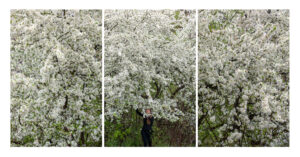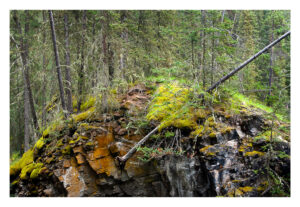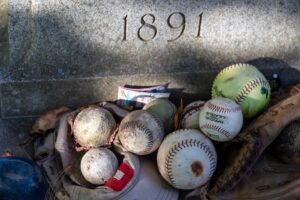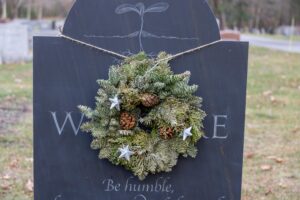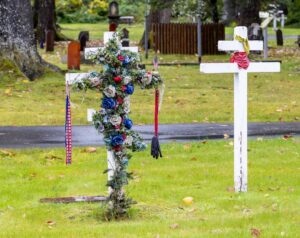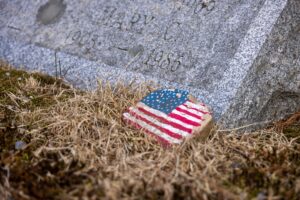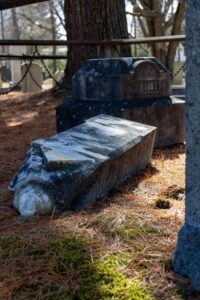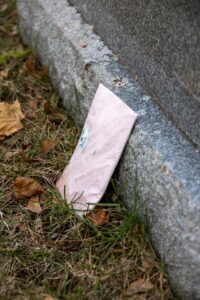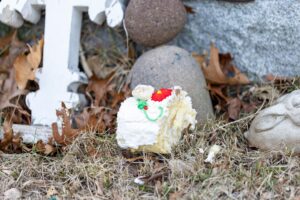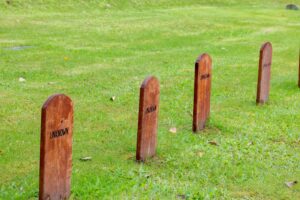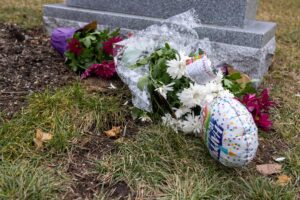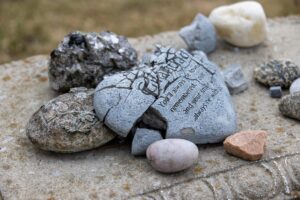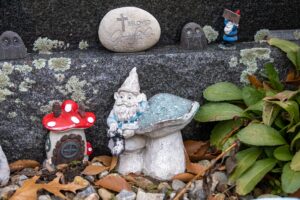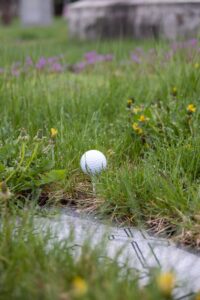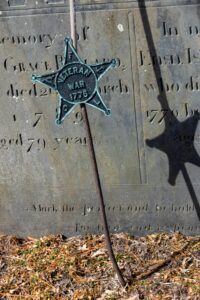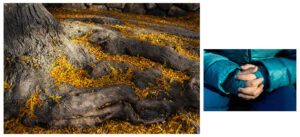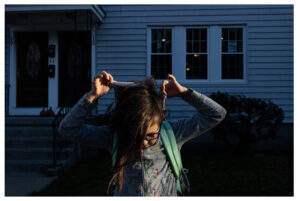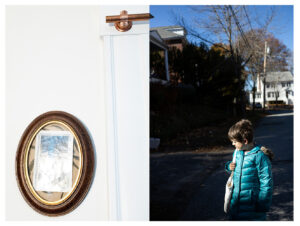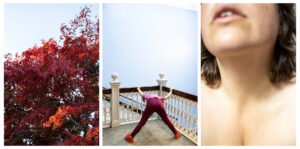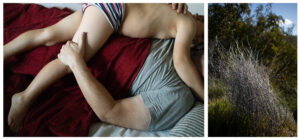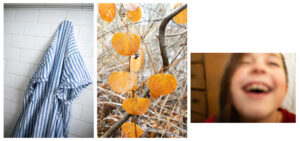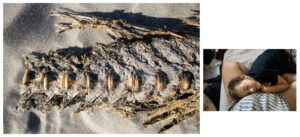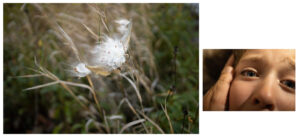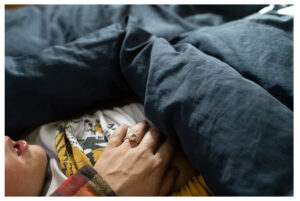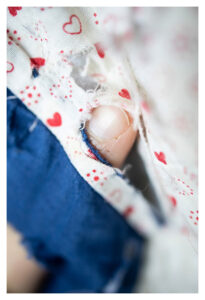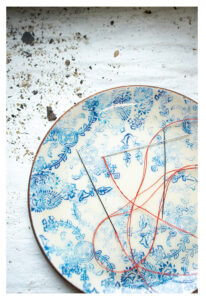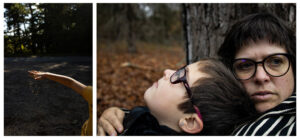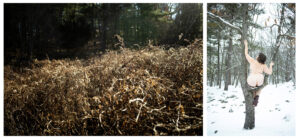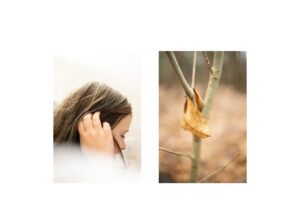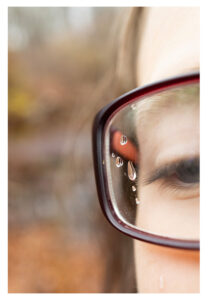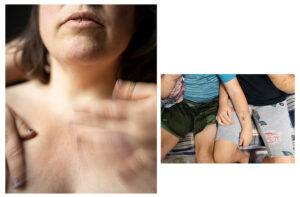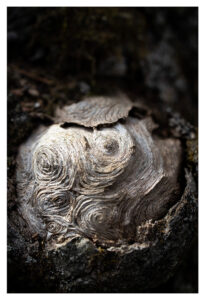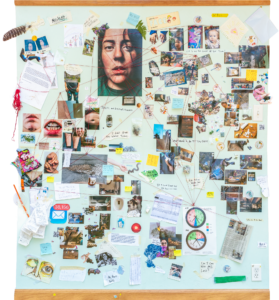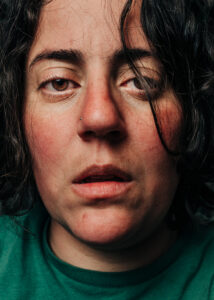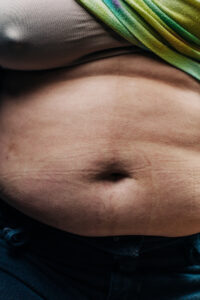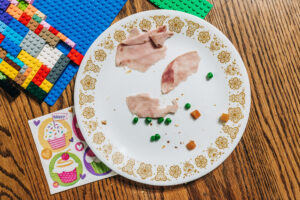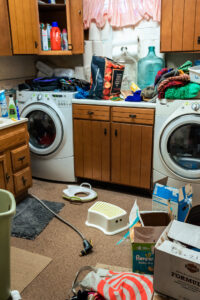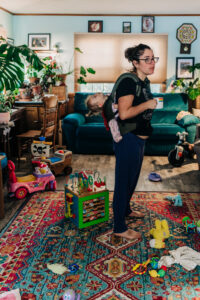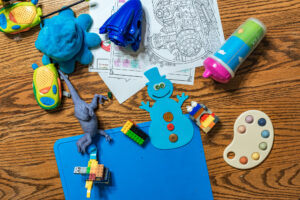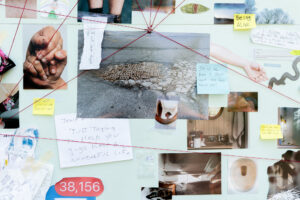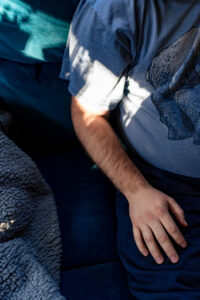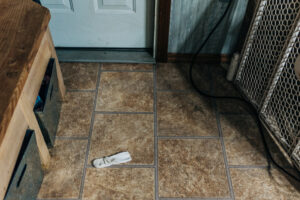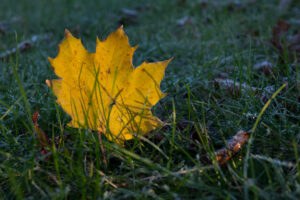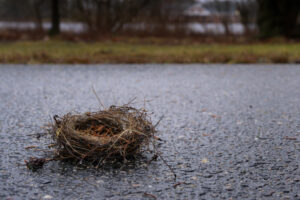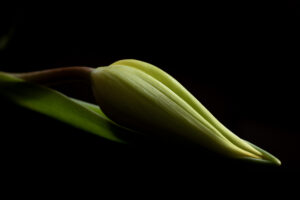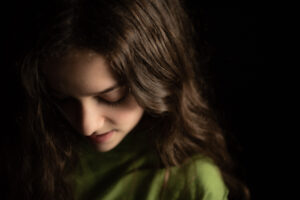Michael King
Flight From Abstraction
In the early 20th century, the Russian artist Kazimir Malevich (1878-1935) painted his seminal work, The Black Square. This painting launched the abstract art movement in which representational forms from the natural world, such as birds, were deliberately obscured from view. Strolling through modern art galleries I have tried to imagine how the paintings would change if the “birds” were able to reappear from their captivity. In this series, I utilize photomontage to explore the narrow boundary where reality and imagination intersect and birds can escape the rigid confines of abstract painting.
I have always enjoyed bird photography. Through the years I have taken thousands of avian photographs. Most of the birds in this series, with a few noted exceptions, originated from my own collection where, for years, they have been patiently waiting to join a photography project like this one.
- Grackle cracking the Black Square painting by Kazimir Malevich (1915)
- White Ibis entangled in Abstract Figure painting by Wood Gaylor (1915)
- Cardinals stuck in 2-dimensions in Composition II in Red, Blue, and Yellow painting by Piet Mondrian (1930)
- Keel Billed Toucan (Shutterstock) navigating Rotating Sun with Arrow painting by Paul Klee (1919)
- Mallard Duck (Shutterstock) disguised in Oriental painting by Wassily Kandinsky (1909)
- Painted Bunting (Shutterstock) peeking through Simultaneous Windows on the City painting by Robert Delaunay (1912)
- Blue Birds fold and leave Ace of Clubs and Four of Diamonds painting by Juan Gris (1915)
- Barred Owl proofreading Le Livre painting by Juan Gris (1913)
- Snow Goose (Shutterstock) bidding Good Afternoon Mrs Lincoln painting by Arshile Gorky (1944)
- Various waterfowl escaping after One Year in Milkweedpainting by Arshile Gorky (1944)
About
Michael King is a Massachusetts based photographer. He is a retired physicist who worked in diverse fields of optical imaging. King has achievements and inventions in 3-dimensional holographic imaging, electron device photolithography and refractive eye surgery (PRK). A lifelong interest in photographic expression has led him to his present pursuit, using digital photography to explore the intersection between real and imagined realities.
King has exhibited his photos in group and juried exhibitions at venues including the Griffin Museum of Photography (Winchester, MA) the Concord Art Association (Concord, MA), PhotoPlace Gallery (Middlebury, VT), and the Praxis Gallery (Minneapolis, MN). Early in his career he had a hologram accepted into the Museum of Holography in Manhattan which later transferred its collections to the MIT Museum in Boston.
King has studied photography at the Griffin Museum, NESOP and the deCordova Museum all located in Massachusetts and at Maine Media. He holds a Ph.D. in physics from Carnegie Mellon University.

































